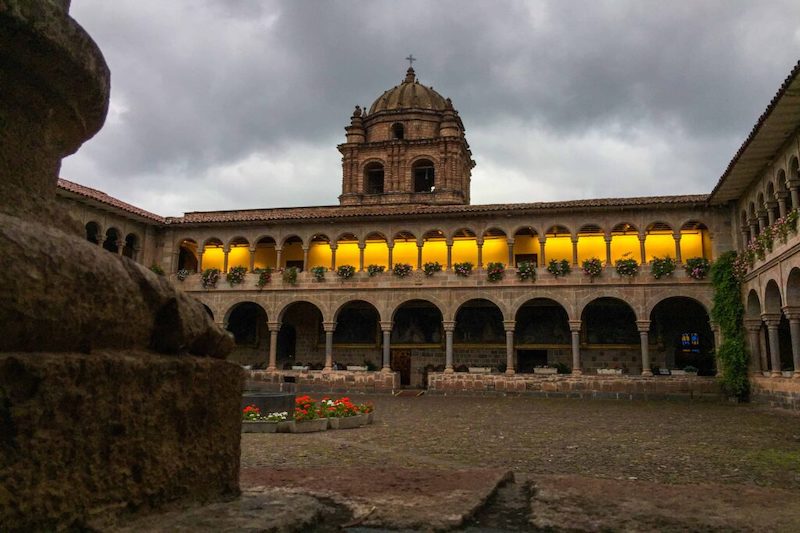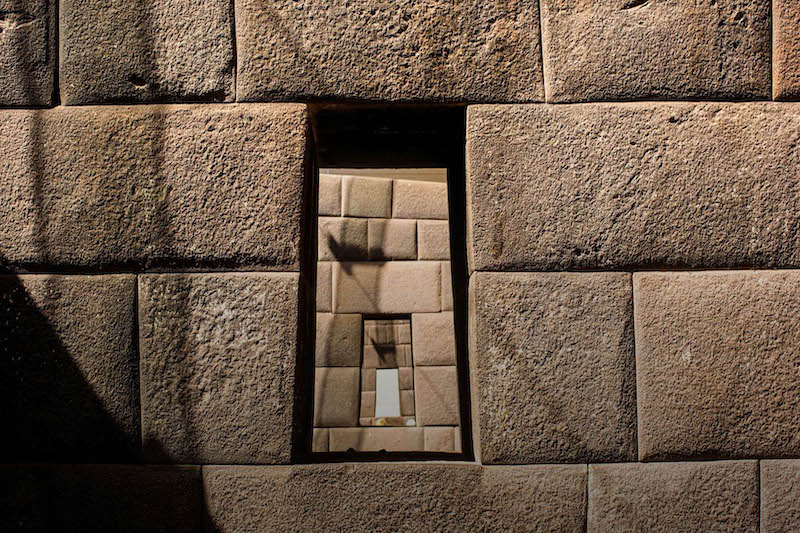
+51 902 759 110 | +51 963 851 960
[email protected]
- Home
- About Us
- Destinations
- Cusco
- Machu Picchu
- Bolivia
- Manu
- Puno
- Treks & Trails
- Package Tours
- Contact Us
One of the most revered temples in the Cusco region is Coricancha, also known by the names Qoricancha or Koricancha. The Quechua word “Coricancha” is a combination of the words “quri,” which means crafted gold, and “kancha,” which means temple. Together, these two words mean “Golden Temple.”

Manco Capac built Coricancha around 1200 BC. The original name of the building was Inticancha. Inti stands for the sun and Cancha for the temple. It was then covered in gold and given the name Coricancha.
With its striking 700 golden sheets, the temple walls were a wonderful sight to behold. Each of these sheets is thought to represent one of the four great Inca gods – Inti (the sun), Killa (the moon), Chaska (the stars), and Illapa (the rainbow). The lovely garden areas of Coricancha were devoted to Wiracocha, who is regarded as the universe’s maker.
Records, however, indicate that the Spanish destroyed some of Coricancha when they arrived in Cusco. They then constructed the Santo Domingo Church on its remains. During their invasions, the Spanish looted Coricancha’s treasures. They also imprisoned Atahualpa, the last Inca in power. They demanded gold as ransom from the Incas in return for his release. Despite receiving the gold, the Spanish killed Atahualpa in 1533 BC.

Coricancha is a true beauty that is unmissable for anyone visiting Cusco. Especially because of its glorious Inca Empire roots and exquisite Spanish colonial style. And along with the usual Inca elements like trapezoid geometries, asymmetrical shapes, and curved edges in its structures, it has very distinctive architectural styles.
The fine stone construction method used by the Incas to build Coricancha, known as ashlar, involves placing stones precisely next to one another without the use of cement so that no gaps are visible. Because of these incredible designs and constructions made of rocks such as diorite, and Andesite, Coricancha can endure severe natural disasters such as earthquakes.

The “Temple of the Sun” is currently Coricancha’s major tourist attraction. This temple formerly made up more than half of Coricancha, but what you see today is Santo Domingo Church.
You can also see “The Temple of the Moon,” which is honored as the sun’s wife and is decorated with silver structures and beautiful moon representations. However, a large portion of the Temple of the Moon was also destroyed to build the Santo Domingo Church.
The next site you see is “The Temple of Venus and the Stars,” which depicts Inca servants to the moon and daughters of the Inca, divided by a narrow alley that is devoted to Venus.
Don’t forget to visit the “Rainbow Temple,” as rainbows were formed by the power of the sun, Incas used to worship at this temple as well.
Next is the “Solar Garden,” where the offerings made to the Sun god were housed.
The wonderfully adorned fountains of Coricancha are another must-see attraction; no one knows where the water flows from.
Coricancha Temple is the first stop on the Cusco City Tour.